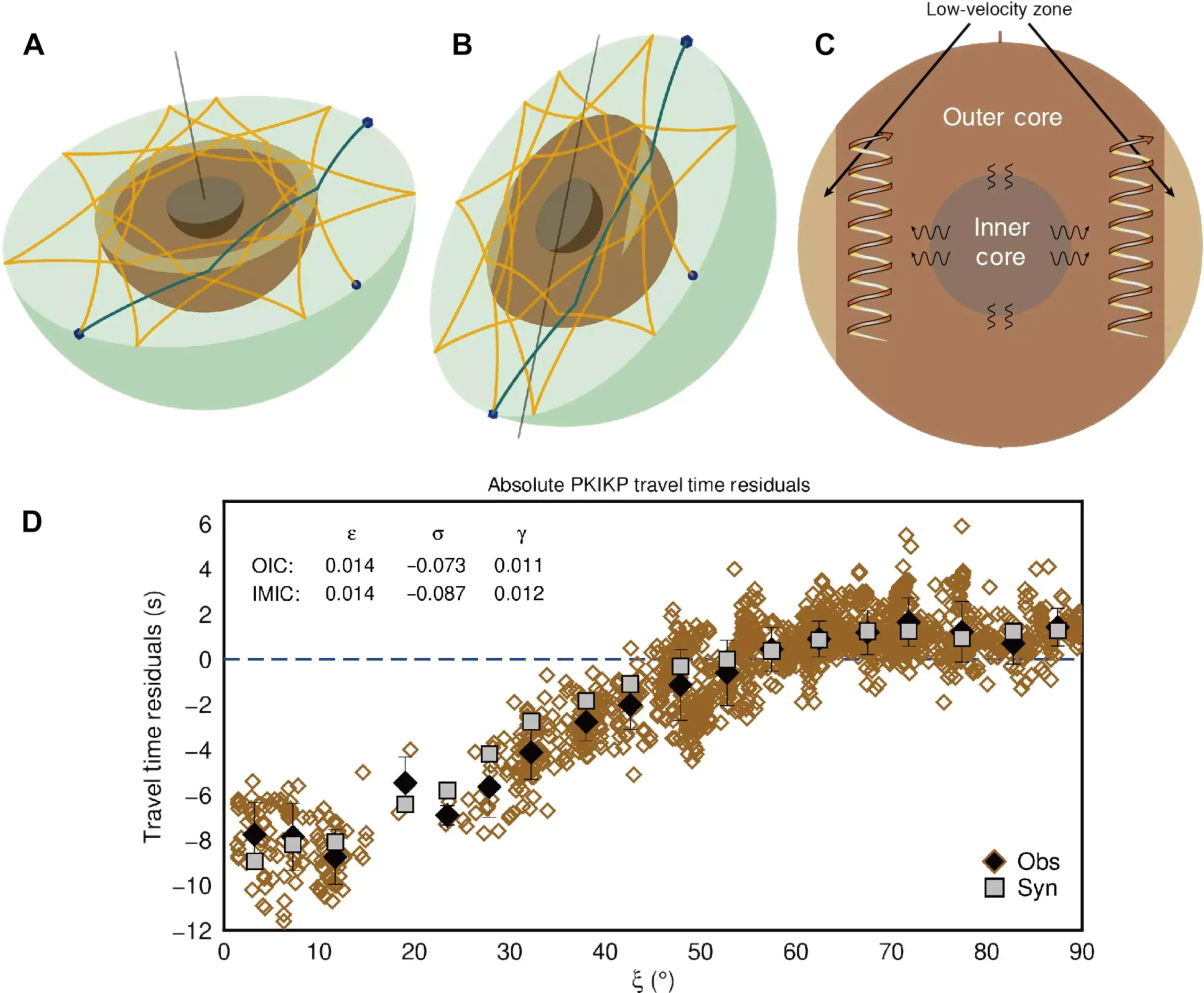A groundbreaking discovery has been made by scientists from The Australian National University (ANU) regarding a doughnut-shaped region located thousands of kilometers beneath the Earth’s surface in the liquid core. This structure, which is situated at low latitudes and runs parallel to the equator, has gone unnoticed until now. The Earth consists of two core layers: the inner core, which is solid, and the outer core, which is liquid, with the mantle surrounding the core. The newly discovered doughnut-shaped region is situated at the boundary where the liquid core meets the mantle, providing vital insights into the dynamics of Earth’s magnetic field.
Research conducted by ANU seismologists revealed that seismic waves in the recently discovered region are slower compared to the rest of the liquid outer core. Professor Hrvoje Tkalčić, a co-author of the study and an ANU geophysicist, highlighted the unique characteristics of this region. He stated, “The region, shaped like a doughnut, is found parallel to the equatorial plane at low latitudes. Although we are unable to determine the exact thickness of the doughnut, our estimations indicate that it extends several hundred kilometers beneath the core-mantle boundary.” The discovery was made possible by analyzing the similarities between waveforms many hours after earthquake events, deviating from traditional seismic wave observation methods.
Implications for Earth’s Magnetic Field
Dr. Xiaolong Ma, another study co-author, emphasized that the newfound insights shed light on the mysteries of Earth’s magnetic field dynamics. The outer core of the Earth, composed mainly of liquid iron and nickel, generates the magnetic field through the movement of electrically conductive liquid. This magnetic field plays a crucial role in protecting the Earth from harmful solar winds and radiation, providing a conducive environment for life to thrive. Understanding the composition of Earth’s outer core, particularly the presence of light chemical elements, is essential for predicting changes in the magnetic field’s strength and behavior.
Unraveling the Earth’s Secrets
It is essential to recognize the interdisciplinary nature of the research effort required to unlock the remaining mysteries of Earth’s outer core. Dr. Ma highlighted the collaborative approach needed from fields such as seismology, mineral physics, geomagnetism, and geodynamics to further our understanding of Earth’s core dynamics. The presence of light chemical elements within the liquid core influences the seismic wave velocities, indicating a higher concentration of these elements that contribute to the slowing down of the waves. Temperature differentials, in conjunction with the presence of light elements, play a vital role in stirring the liquid within the outer core, influencing the generation of Earth’s magnetic field.
Professor Tkalčić underscored the importance of the magnetic field in sustaining life on Earth. He stated, “The magnetic field serves as a fundamental element necessary for the survival of life on our planet’s surface.” The findings regarding the unique properties of the newly discovered doughnut-shaped region within Earth’s core provide valuable insights into the complex interactions that govern our planet’s magnetic field and its role in maintaining a habitable environment. By unraveling the secrets hidden deep within Earth’s core, scientists are paving the way for a deeper understanding of the forces that shape our planet and its magnetic field dynamics.


Leave a Reply